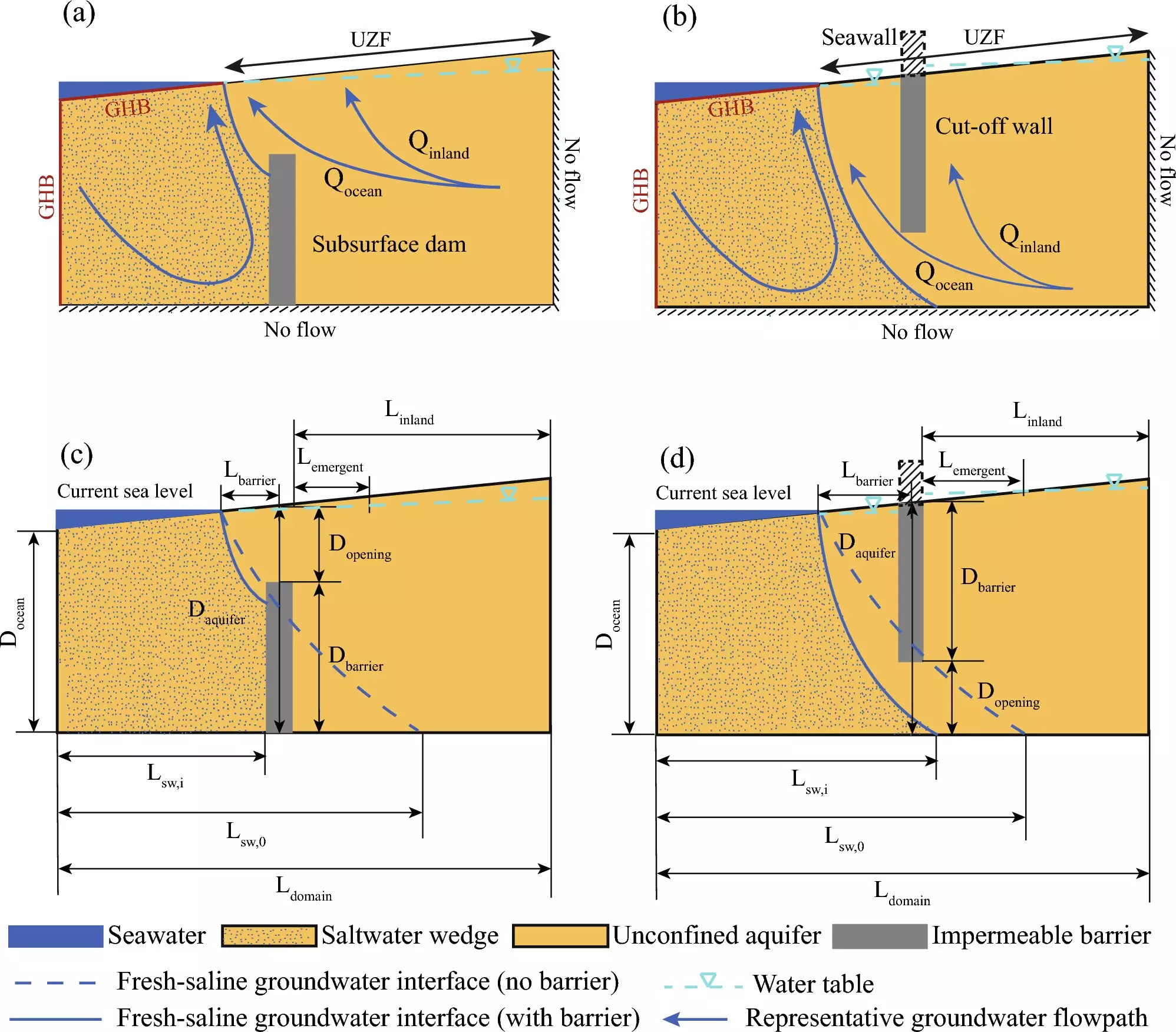As climate change continues to escalate, the looming threat of rising sea levels has become an alarming reality for coastal communities worldwide. The statistics are unnerving: between 2000 and 2015, sea levels rose from 1.4 millimeters per year to an alarming 3.6 millimeters per year. This rapid increase places over a billion people living in low-lying coastal areas at risk of severe flooding. The urgency to develop effective solutions is clear—communities must find innovative strategies to safeguard their homes, infrastructure, and freshwater resources from the dual threats of flooding and saltwater intrusion.
Seawalls: A Double-Edged Sword
Seawalls and similar protective structures have emerged as frontline solutions against flooding in major cities like New York and San Francisco. Plans drafted with the Army Corps of Engineers signal a push for these towering barriers meant to shield urban areas from rising tides. However, the projected costs are staggering—tens of billions of dollars are required to implement these massive infrastructures. While seawalls may seem like the answer to flooding, recent studies suggest that they could exacerbate other issues, particularly groundwater flooding.
A critical study, “Shoreline barriers may amplify coast groundwater hazards with sea-level rise,” published in *Scientific Reports*, highlighted these unintended consequences. The research, spearheaded by experts from various universities, reveals the complex dynamics of groundwater movement in response to rising sea levels. It illustrates how the construction of seawalls could inadvertently trap saltwater and create a scenario where excess groundwater overwhelms urban drainage systems.
Saltwater Intrusion and Groundwater Emergence
At the heart of the problem lies the interaction between fresh and saltwater. As sea levels rise, salty groundwater begins infiltrating inland, replacing the fresh groundwater essential for drinking and irrigation. Simultaneously, as both types of groundwater rise due to the increased pressure from the ocean, low-lying areas face the risk of flooding from below—a phenomenon termed groundwater emergence.
Underground barriers, while designed to combat saltwater intrusion, can become detrimental if not managed correctly. Acting as subterranean dams, these structures could hinder groundwater flow, resulting in excessive pressure that forces water upwards. This not only risks contaminating drinking water systems but could also impose severe stress on urban sewer systems—a situation urban planners cannot afford to ignore.
The Need for Holistic Solutions
The study’s authors urged city planners to reevaluate their strategies in light of these findings. The traditional focus on seawalls alone is not sufficient; they may require a robust support system involving pumps and drainage solutions. As noted by research assistant professor Xin Su, without careful planning and consideration for the potential flooding risks posed by rising groundwater, coastal defenses may ultimately worsen the very problems they are intended to mitigate.
Innovative systems such as French drains could be part of the solution. These perforated pipes embedded in gravel divert excess water away from foundations, thus alleviating some of the pressure caused by trapped groundwater. The incorporation of such alternatives into urban planning is crucial for the success of any long-term mitigation strategy against rising tides.
A Call to Action for City Planners
Coastal cities must recognize that there are no one-size-fits-all solutions when it comes to combatting seawater intrusion and groundwater flooding. The stakes are high; the lives of millions are at risk. Community leaders and planners need to initiate dialogues about multi-faceted approaches that integrate natural and man-made solutions. This includes assessing the environmental impact of seawalls, considering the geography of coastal areas, and leveraging technology to monitor groundwater levels effectively.
Ultimately, the key to success will involve community engagement and interdisciplinary collaboration. Experts in hydrology, civil engineering, environmental science, and city planning must work together to craft solutions that address both immediate and long-term concerns. In doing so, they can ensure that coastal communities are not only shielded from rising seas but also resilient in the face of future environmental challenges. Only through innovative approaches and a shift in perspective can we hope to combat the pressing issue of coastal flooding effectively.

